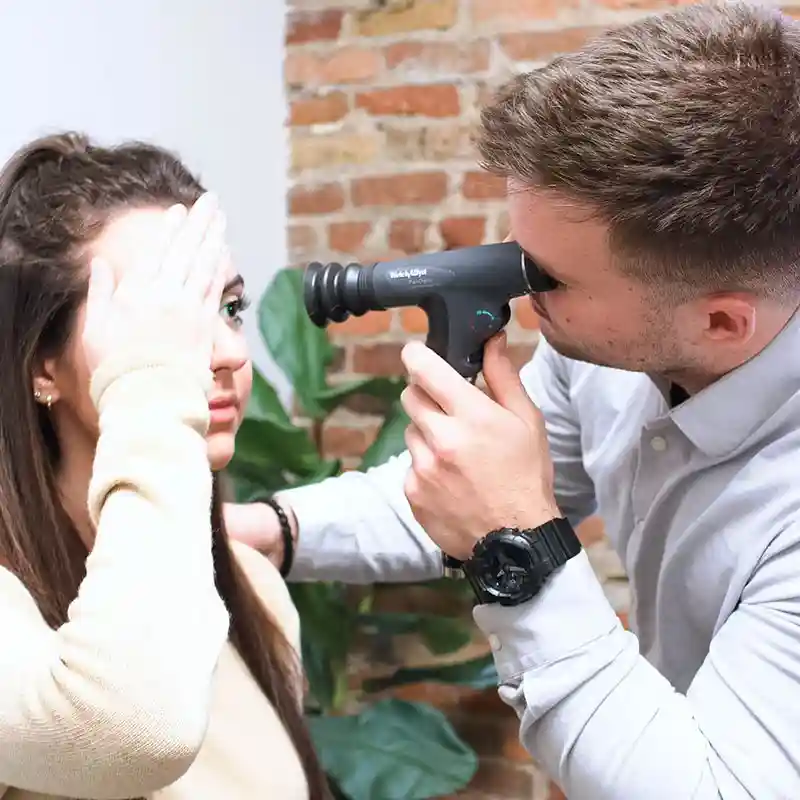Condition: Headaches
NeuroRecovery Program
A headache is a pain in any region of the head.
It may appear as a sharp pain, a throbbing sensation, or a dull ache. Headaches typically are classified as a tension headache, migraine, or cluster headache.
Program Details
Headaches can be frustrating, recurring, and disruptive. At The Neurologic Wellness Institute, we look beyond symptoms to help you understand why your headaches happen and how to manage them effectively. Using an integrative approach grounded in functional neurology and functional medicine, we focus on root causes like inflammation, neurological dysfunction, hormone imbalances, and metabolic stress.
Our team includes experts in chiropractic neurology, functional medicine, and advanced neurological rehabilitation. Whether you’re dealing with chronic migraine, post-concussion syndrome, or a traumatic brain injury, we help you regain control with a customized plan that targets the source of your headache pain — not just the symptoms.
See What Our Clients Are Saying About Us
Many of our clients arrive after years of chronic pain and limited results. Through personalized care and brain-based therapy, they’ve found real progress.
Types of Headaches
Tension Headaches
Tension headaches are the most common type. You may feel a dull ache or tight pressure around your forehead or the back of your head. They’re often linked to stress, posture, or jaw and neck tension. A chiropractic neurologist may help address the physical triggers contributing to your symptoms.
Migraines
Migraines are intense, recurrent headaches that may come with nausea, sensitivity to light or sound, and visual changes. About 20% of women and 7% of men experience them. Triggers include certain foods, stress, hormonal shifts, and sleep disruption. Some migraines are genetic.
Experts now believe migraines are caused by abnormal brain activity, not just blood flow changes. At The Neurologic Wellness Institute, we treat chronic migraine as a complex neurological condition. We use advanced diagnostics to identify imbalances in your nervous system, hormones, and digestive health — so we can create a care plan that helps reduce frequency and intensity long term.
Many clients describe their migraines as unpredictable, and for good reason: triggers vary widely and can be either singular or cumulative. Common migraine triggers include:
- Specific foods or food additives
- Environmental factors like strong smells or flickering lights
- Hormonal fluctuations related to menstrual cycles, birth control, or menopause
- Stress, lack of sleep, dehydration, or changes in barometric pressure
- Certain medications
Some types of migraines are genetic and may run in families. While the exact cause of migraines is still being researched, experts now believe they stem from abnormal brain activity rather than changes in blood flow, as once thought. This activity may affect nerve signals, chemical balances, and vascular function within the brain.
Cluster Headache
Cluster headaches are rare but extremely painful. They cause sharp, burning pain around one eye, and may lead to tearing, nasal congestion, or facial flushing. These headaches often occur in cycles and may be linked to neurological conditions involving the hypothalamus. We evaluate for underlying causes like neurological disorder, hormone imbalance, or environmental triggers to guide your care.

Headaches
Evaluation
You’ll start with a comprehensive, three-hour neurological evaluation. We go deeper than traditional approaches to pinpoint exactly what’s contributing to your headaches. Your evaluation may include:
- Quantitative EEG (QEEG)
- Video-Oculography (VOG)
- Neurocognitive and balance testing
- Visual-motor reaction time testing
- Neurological and physical examination
- Advanced diagnostic lab testing
Headaches
Treatment
This level of insight is essential for conditions like headaches, post-concussion syndrome, and traumatic brain injury. We assess your nervous system, immune function, hormone balance, and more — because your whole body plays a role in how your brain functions. We don’t just mask the pain. We help you heal. Your personalized treatment plan is built around your needs and may include:
- Brain-based therapy and neurological rehabilitation
- Chiropractic neurology and structural care
- Nutrition and gut support
We work to address chronic pain, restore nervous system function, and support long-term recovery from headaches, migraines, and related neurological conditions.
Why Choose NWI for Headaches
The Neurologic Wellness Institute brings together some of the most credentialed experts in functional neurology, chiropractic neurology, and functional medicine. Our clinicians hold advanced certifications and regularly educate peers around the globe.
We are not a symptom-suppression clinic. We offer:
- A deep commitment to root-cause evaluation
- Expertise in complex neurological disorders
- Non-invasive therapies grounded in clinical research and neurophysiology
- Custom care for every client — no one-size-fits-all protocols
If you’re seeking a functional neurologist for headaches, our multidisciplinary team may provide the clarity and care you’ve been missing.
Empowering Headache Patients
If you’ve been told there’s no solution, we’re here to tell you otherwise. We equip you with education, tools, and expert support to help you move forward.
From chronic migraine to post-concussion recovery, our clients gain more than symptom relief — they gain a renewed sense of control over their health.

Find out if The Neurologic Wellness Institute is perfect for you.

